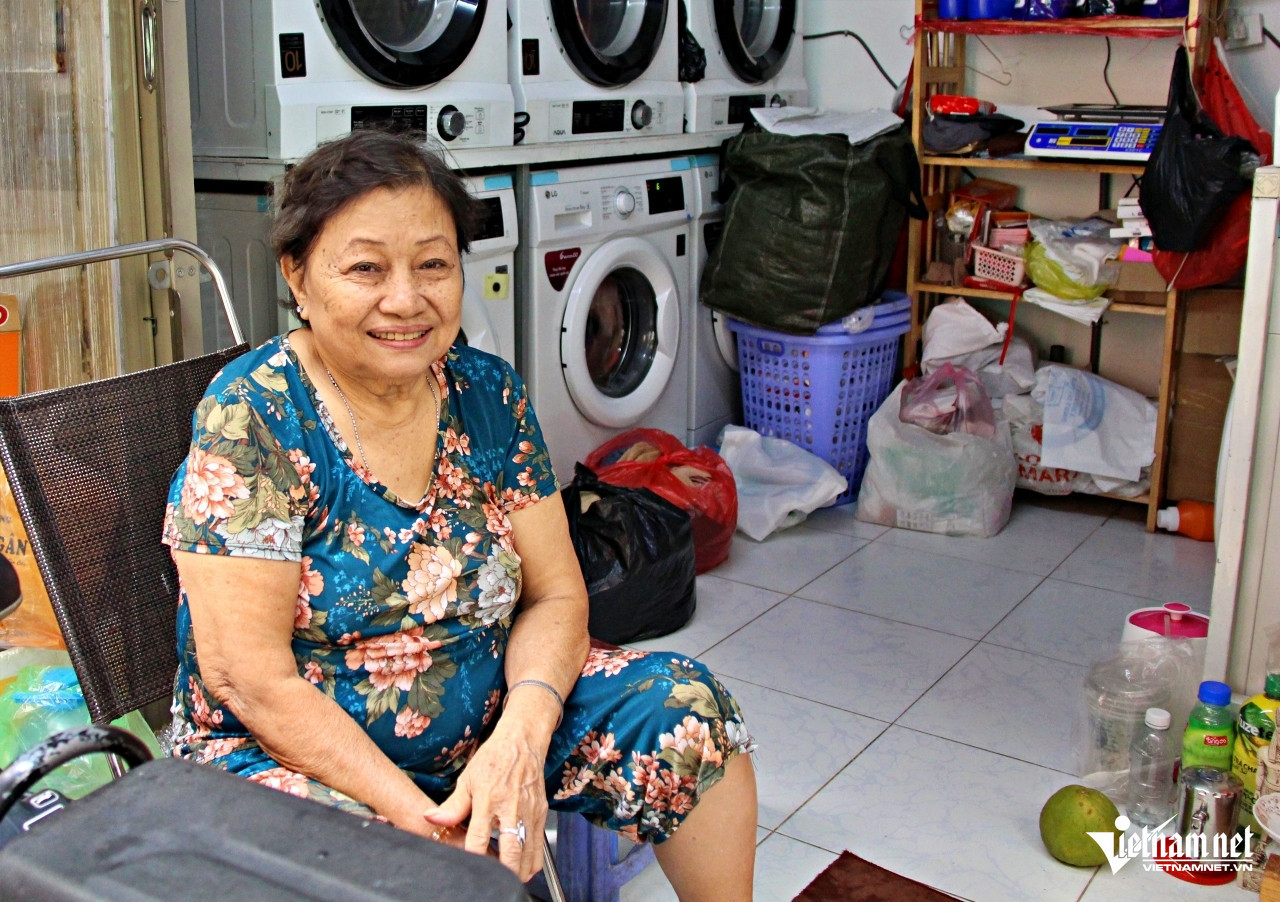
On a morning in late September, after the rain abated, Tran Thi Mung, 65, put a mini cooker in front of her house on the alley to boil water to prepare tea. As the place was so small, she had to take the cooker away and put baskets on the same spot to begin cleaning vegetables.
Mung is one of the longest-living residents of the ‘alley of box-like houses’. Local people say in the French colonial period, there were only several large houses with an area of hundreds of square meters each.
These included houses owned by one of the four great tycoons of old Saigon. The residents were mostly Chinese immigrants who lived in the rented houses.
Later, petty merchants and street vendors around Ben Thanh Market flocked to the land in front of the houses and set up cottages. More and more cottages for temporary residency appeared.
After the southern region was liberated in 1975, the local residents were persuaded to move to settlement areas under the new economic zone program.
This was a policy of the Vietnamese Government to organize and redistribute labor and population throughout the country, under which people from the plains and cities migrated to the midlands, mountainous areas, border areas and islands.
Since many people could not adapt to the new living circumstances, they returned to HCM City and settled down in the small alley.
Since then, many tiny houses with an area of 3-10 sq m have arisen. As such, the alley has been separated into two parts, with both large and spacious houses and tiny houses.
“My mother has lived here since she was 15 years old. My parents were persuaded to move to the new economic zones, but they finally came back as they could not settle down there,” Mung said.
“When they returned, they set up a temporary wooden house, 1.8x2.8 meters. Our family members were born here and grew up in the cramped house,” she said.
Most of the houses in the same row as Mung’s house are owned by people returning from new economic zones, so the houses are called "new economic zone houses" to differentiate them from the row of spacious houses on the opposite side.
“When I was a little girl, I heard from my mother that she saw people coming here every month to collect fees from tenants. But later, most Chinese living in the rented houses left. Only the people like us stayed here,” she explained.
Since the houses’ areas are small, just several square meters, most owners reserve the first floor for the toilet and for one person to sleep. Furnishings are hung on the wall or put in front of the houses on the alley.
Le Thi Phan, 72, another resident, earns her living by running a small laundry shop. Her house is just large enough for three washing machines.
Phan said she has been living there since 1969. At first, the land was deserted and there were only several Chinese living in the rented houses. After 1975, the small alley became more populated, and her house has become smaller.
Many years ago, she and her husband lived on petty trade. Later, she turned to her hometown in the Mekong Delta, but, as she got older, she had a fond remembrance of the small alley and moved back there.
Mung said the tiny house was the accommodation for three generations of her family. More than 10 persons lived in the 6 sq m house. The situation has improved since then as some family members have left.
She said the people living in new economic zone houses are mostly petty merchants, while the families living in the opposite houses are well-off. Despite the difference, local residents are united.
“So, though our alley is small, our lives are peaceful,” Mung said.
Ha Nguyen